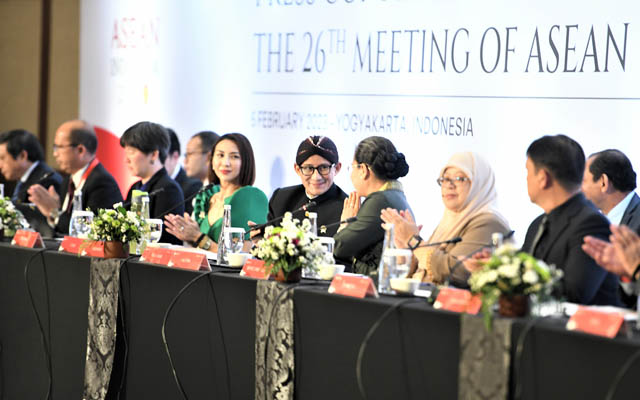Continued destination marketing under the ASEAN banner as well as the progressive relaxation and removal of travel restrictions by member states throughout 2022 have yielded more positive tourism numbers for the South-east Asian region.
At the February 5 press conference concluding the 26th Meeting of ASEAN Tourism Ministers (26th M-ATM) in Yogyakarta, Indonesia, meeting chair Sandiaga Uno, minister of tourism and creative economy, Indonesia, noted that destinations in the economic grouping have altogether achieved a 1,706.61 per cent year-on-year increase in tourism receipts based on preliminary figures for 2022.

ASEAN member states have also recorded 1,222.99 per cent year-on-year increase in international arrivals, while hotel rate occupancy has improved by 16 per cent over the same period.
Destination marketing efforts fuelling the return of tourists to the region include social media content, digital campaigns and activities bearing the new brand and tagline, A Destination for Every Dream.
The Meeting emphasised the need for member states to deepen their collaboration with relevant partners in the areas of destination marketing. It also commended initiatives that were supported by external partners, such as the Intra-ASEAN Tourism Recovery Campaign, which received support from the Canadian Trade and Investment Facility for Development, as well as ASEAN’s collaboration with regional travel trade publisher and event organiser TTG Asia Media and the Sub-Regional Secretariats to amplify the call to visit South-east Asia.
Focus ahead will be on accomplishing even more key measures under the Post-Covid-19 Recovery Plan for ASEAN Tourism. These include developing regional cruise tourism and the promotion of new and lesser known destinations in the region.
Sandiaga recognises that connectivity improvements – not just within South-east Asia but also from markets outside of the region – are crucial for ASEAN member states to achieve these joint tourism goals.
In the case of Indonesia, direct flights to and from India are still lacking despite the latter being the “lowest of the low-hanging fruits” for tourism.
Philippine Tourism secretary Christina Garcia-Frasco said tourism heads have agreed to work on boosting air lift by identifying airports that can be used to operate additional direct flights for the purpose of driving tourism flow into both key and emerging destinations.
She added that some of the new flights – either scheduled or chartered – may be launched this year for routes within South-east Asia as well as to and from ASEAN-Plus Three partners China, India and South Korea.
Tourism development across the region will also consider responsible and inclusive growth for all, and the need for greater digitalisation.




















